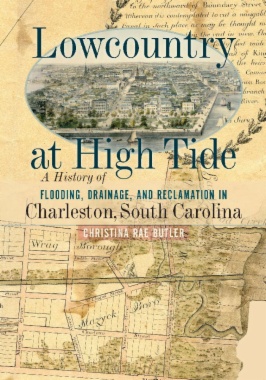The signs are there: our coastal cities are increasingly susceptible to flooding as the climate changes. Charleston, South Carolina, is no exception, and is one of the American cities most vulnerable to rising sea levels. Lowcountry at High Tide is the first book to deal with the topographic evolution of Charleston, its history of flooding from the seventeenth century to the present, and the efforts made to keep its populace high and dry, as well as safe and healthy.
For centuries residents have made many attempts, both public and private, to manipulate the landscape of the low-lying peninsula on which Charleston sits, surrounded by wetlands, to maximize drainage, and thus buildable land and to facilitate sanitation. Christina Butler uses three hundred years of archival records to show not only the alterations to the landscape past and present, but also the impact those efforts have had on the residents at various socio-economic levels throughout its history.
Wide-ranging and thorough, Lowcountry at High Tide goes beyond the documentation of reclamation and filling and offers a look into the life and the history of Charleston and how its people have been affected by its unique environment, as well as examining the responses of the city over time to the needs of the populace. Butler considers interdisciplinary topics from engineering to public health, infrastructure to class struggle, and urban planning to civic responsibility in a study that is not only invaluable to the people of Charleston, but for any coastal city grappling with environmental change.
Illustrated with historical maps, plats, and photographs and organized chronologically and thematically within chapters, Lowcountry at High Tide offers a unique look at how Charleston has kept—and may continue to keep—the ocean at bay.
- Cover�������������������������������
- Lowcountry at High Tide�������������������������������������������������������������������������������������
- Title�������������������������������
- Copyright�������������������������������������������
- Dedication����������������������������������������������
- CONTENTS����������������������������������������
- Acknowledgments�������������������������������������������������������������
- Editorial Notes�������������������������������������������������������������
- Introduction����������������������������������������������������
- ONE Colonial Charlestown����������������������������������������������������������������������������������������
- TWO The Federal Era and the Incorporation of Charleston�������������������������������������������������������������������������������������������������������������������������������������������������������������������������������������
- THREE Increased Activity and Antebellum Filling�������������������������������������������������������������������������������������������������������������������������������������������������������������
- FOUR War, Reconstruction, and Jim Crow: 1860 to 1900����������������������������������������������������������������������������������������������������������������������������������������������������������������������������
- FIVE Early Twentieth-Century Progress�������������������������������������������������������������������������������������������������������������������������������
- SIX Between Two World Wars����������������������������������������������������������������������������������������������
- SEVEN Modern Charleston Emerges: World War II to the 1960s����������������������������������������������������������������������������������������������������������������������������������������������������������������������������������������������
- EIGHT Filling Activities Draw to a Close: 1960s to the Twenty-First Century�������������������������������������������������������������������������������������������������������������������������������������������������������������������������������������������������������������������������������������������������
- NINE Implications of the Past, Current Issues, and Improvement Initiatives����������������������������������������������������������������������������������������������������������������������������������������������������������������������������������������������������������������������������������������������
- Conclusion����������������������������������������������
- Appendix 1: Report by City Engineer Louis Barbot to Mayor George Bryan Summarizing the Tidal Drain System Shortcomings, 20 August 1890����������������������������������������������������������������������������������������������������������������������������������������������������������������������������������������������������������������������������������������������������������������������������������������������������������������������������������������������������������������������������������������������������������������������������������
- Appendix 2: Drainage and Sewerage Summary Letter, Gedney Howe to Alfred Halsey, 23 September 1950�������������������������������������������������������������������������������������������������������������������������������������������������������������������������������������������������������������������������������������������������������������������������������������������������������������������
- Appendix 3: Timeline of Major Fill- and Drainage-Related Events�������������������������������������������������������������������������������������������������������������������������������������������������������������������������������������������������������������
- Notes�������������������������������
- Bibliography����������������������������������������������������
- Index�������������������������������

